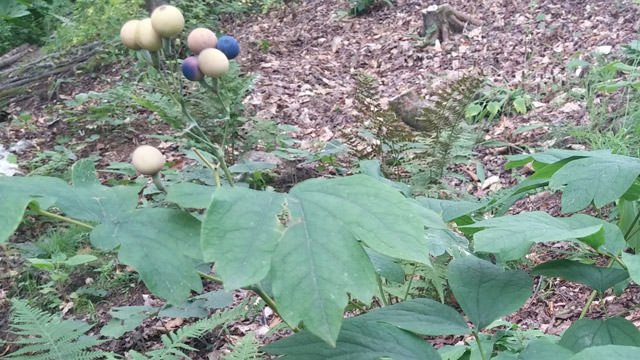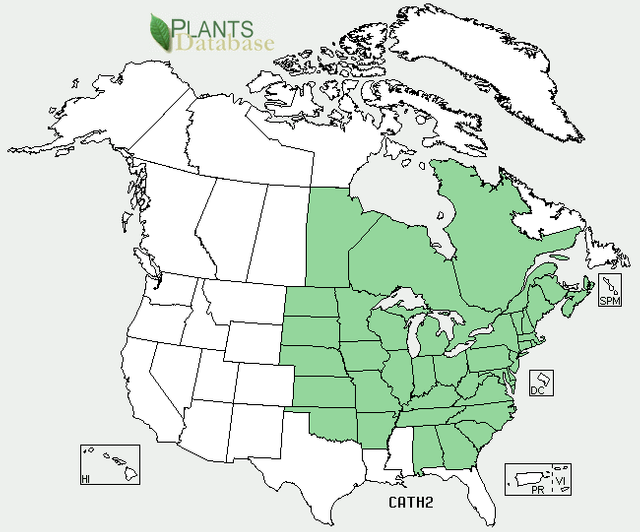Getting to Know Herbs: Blue Cohosh
The next plant along the trail of the herb garden was the Blue Cohosh. It's also referred to as Blue Ginseng, Papoose Root, Cohosh Azul, Squaw Root and Yellow Ginseng, among others. It's a medium-tall perennial with blue fruits. The leaves are tulip shaped.

Key Points
- available as a supplement
- similar effects to hormone estrogen
- supplement made from roots and rhizome
- used in traditional Herbal Medicine as a uterine tonic and to help relieve menstrual pain.
History
The name "cohosh" means "rough" and comes from the Algonquin Native Americans who used it. It was also used by Menomini, Meskawi, Ojibwe, and Potawatomi tribes. The main uses were for menstrual cramps, to suppress profuse menstruation, and to induce contractions in labor. In the 19th century, it was still used widely as an emmenagogue (increase blood flow for uterus), parturient (inducing labor), and antispasmodic (suppress muscle spasms).
Where is it found
It's found in central and eastern North America from Manitoba and Oklahoma east to the Atlantic Ocean. Look in hardwood forests of the eastern United States, particularly in moist coves and hillsides with shady locations and in rich soil.

Source
What's it used for?
For stimulating the uterus and starting labor; treating sore throat, cramps, hiccups, epilepsy, hysterics, inflammation of the uterus, infection of the female organs, over-growth of uterine tissue (endometriosis), and joint conditions.
Are there any risks?
It's potentially unsafe during pregnancy or breastfeeding. Some of the chemicals are linked to possibly causing birth defects. It can narrow blood vessels, and potentially cause heart problems in newborns. It can be toxic.
It can worsen some heart conditions like angina and high blood pressure. Blood vessels int heart may become smaller and decrease oxygen flow. Rapid heartbeat and high blood pressure can result.
Acting like estrogen, some conditions that are made worse by exposure to estrogen should avoid blue cohosh.
References:
Thank you for your time and attention. Peace.
If you appreciate and value the content, please consider: Upvoting, Sharing or Reblogging below.
 me for more content to come!
me for more content to come!
My goal is to share knowledge, truth and moral understanding in order to help change the world for the better. If you appreciate and value what I do, please consider supporting me as a Steem Witness by voting for me at the bottom of the Witness page.

The herb does sounds risky with the estrogen component. But it also has definite benefits. I'm fortunate to live near a health food store where expert advice is given freely.
I do support @Krnel as witness because you give very much back to the community. Thank you.
Yeah, it can be. If you need menstrual relief or other female related reasons, then it might be worth it. Many modern medicines also have adverse effects and risks too ;) Thanks for the support.
interesting stuff, looks like it grows in my area, I will have to keep an eye out when I am out in the woods hunting.
Seem to be more for female issues than male though ;)
just might save your life if you were in a survival situation with a woman at the wrong time of the month!
It is an amazing herb as stated. The blue fruits may indicate an efficacy against said ailments. @krnel